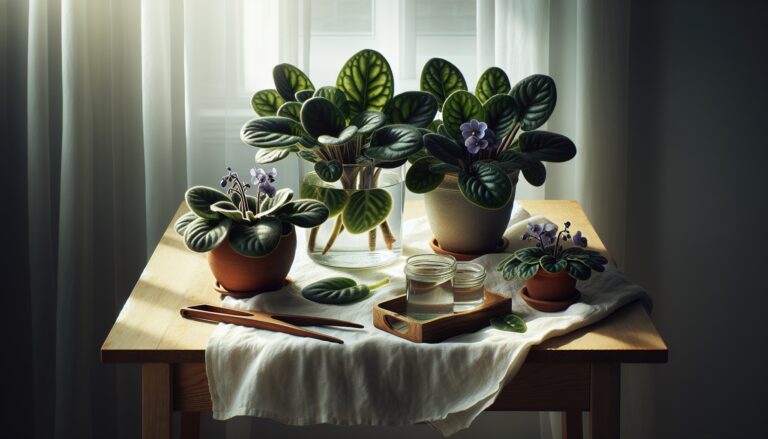Argomenti trattati
Understanding African violets
African violets are beloved houseplants known for their stunning blooms and ease of care. These vibrant plants thrive indoors, bringing a splash of color to any space. To maximize their beauty, it’s recommended to group them in clusters of three or more. This not only enhances their visual appeal but also creates a lush indoor garden atmosphere. If you’re looking to expand your collection, propagating African violets from leaf cuttings is a straightforward and rewarding process.
When to propagate African violets
The best time to start propagating African violets is during the spring season. This period offers optimal conditions for growth, including longer daylight hours and favorable temperature and humidity levels. While you can propagate these plants at any time, spring provides the best chance for success. By taking advantage of the natural growth cycle, you can ensure that your new plantlets receive the energy they need to thrive.
Choosing the right leaves for propagation
When selecting leaves for propagation, it’s essential to choose vigorous, mature leaves located near the bottom of the main stem. These leaves have the energy required to produce roots and new plantlets. Avoid using the oldest leaves, as they are less likely to succeed in rooting. To detach a leaf, gently twist it off or use a sharp, sterile knife to cut it at the stem. Make sure to trim the stem to about 1.5 to 2 inches long, cutting at a 45-degree angle to promote better rooting.
Propagation methods: Water vs. soil
Once you have your leaf cuttings, you can choose between two propagation methods: water or soil. If you opt for water propagation, ensure that the water is clean and preferably distilled or sterilized. Place the cuttings in a small container, ensuring that only the stem is submerged. Alternatively, you can propagate directly in soil. Use small pots filled with a loose potting mix, such as a combination of sand or sphagnum moss with vermiculite or perlite. Both methods can yield successful results, so choose the one that suits your preferences.
Care for your cuttings
After planting your cuttings, it’s crucial to provide the right care. If your environment maintains a humidity level of 50 to 60 percent, you may not need to cover the cuttings with plastic. However, regular watering is essential to keep the soil moist. As your cuttings develop, they may produce multiple clones, each identifiable by two leaves attached at the base. Wait until the leaves reach the size of a dime before attempting to separate them. At this stage, each clone should have four to six leaves forming a rosette, indicating that they are ready for potting.
Conclusion
Propagating African violets can be a delightful and fulfilling endeavor. By following these steps, you can easily expand your indoor garden and enjoy the beauty of these charming plants. Whether you choose to root in water or soil, the key is to provide the right conditions and care for your cuttings. With patience and attention, you’ll soon have a thriving collection of African violets to brighten your home.

